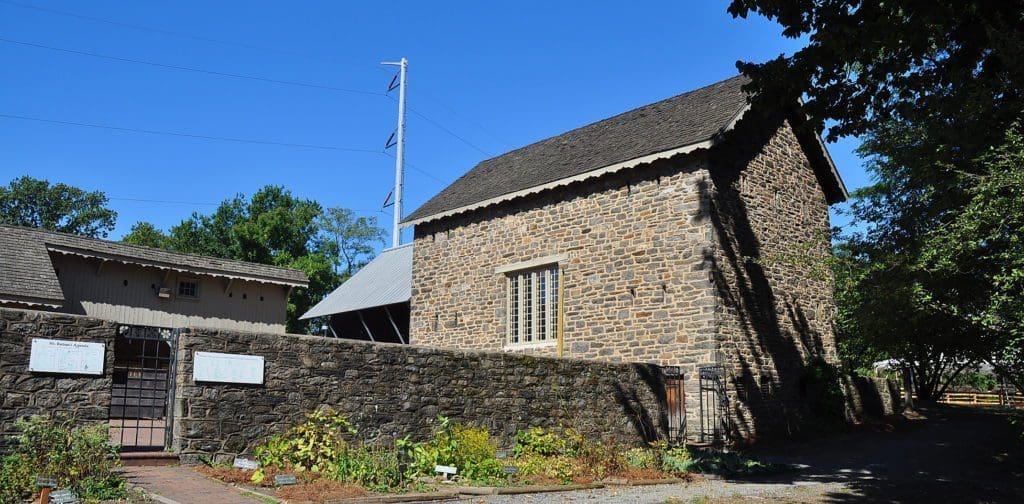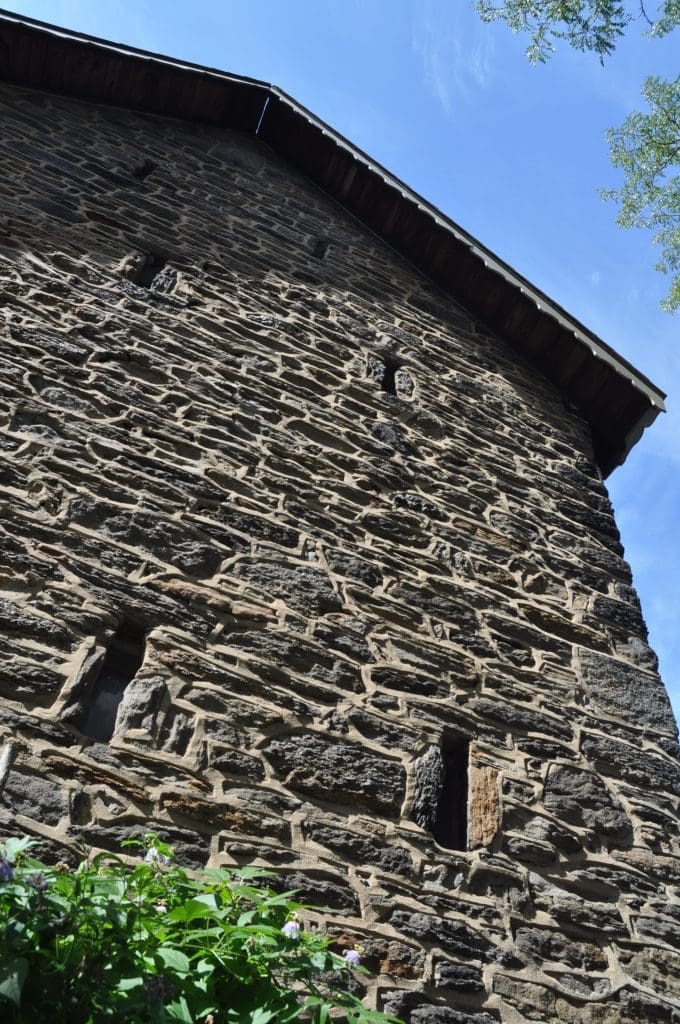Debunking a Myth about our 1775 Bartram Barn

 The Bartram Barn was built in 1775, largely by John Bartram’s son, John Bartram, Jr., who was a farmer. We sometimes overhear visitors explaining the function of its narrow window slits, the most common reason being that “…. they were for defense, such as shooting rifles during Indian attacks.”
The Bartram Barn was built in 1775, largely by John Bartram’s son, John Bartram, Jr., who was a farmer. We sometimes overhear visitors explaining the function of its narrow window slits, the most common reason being that “…. they were for defense, such as shooting rifles during Indian attacks.”
As exciting as that sounds, the more mundane truth is that these thin windows were more for light and ventilation. Without these apertures, the 18th-century structure — an excellent example of a Pennsylvania “bank barn” — would be completely dark inside.
Adds Bartram’s Garden curator Joel Fry, “The slits were primarily for ventilation—to allow air to move around the stored grain and hay on the second floor level. Without air moving, heat can build up in grain and hay, in some cases hot enough to burst into flame—what is called spontaneous combustion. It’s usually caused by decomposition heat—any moisture in the hay or grain will start composting, which generates heat. And there was generally a great deal of dust in the air around stored grain and hay—which is easy to ignite. Even in modern times the explosion of grain elevators happens, sometimes catastrophically.”
 “So the ventilation is to prevent fire, not mainly for the odor—I’ve been in bank barns with animals, and the smell is not that strong. The cows and horses are in stalls with straw bedding, which is changed frequently (maybe daily), so the smell is more like sweet dry straw.”
“So the ventilation is to prevent fire, not mainly for the odor—I’ve been in bank barns with animals, and the smell is not that strong. The cows and horses are in stalls with straw bedding, which is changed frequently (maybe daily), so the smell is more like sweet dry straw.”
As for the dramatic idea of Indian attacks, Fry also lays that rumor to rest. “There were never any hostile Indians in the Philadelphia area from the time of Quaker settlement. When William Penn arrived with the Quakers, the native population was already very low, a result of waves of introduced European diseases and internal Indian warfare to the west. There was never any need to build defensive forts or block houses in eastern part of the Pennsylvania colony.”
So, there were no Indian attacks, but still the 1775 structure remains the oldest barn in Philadelphia County. Come see this and the rest of our historic House and Gardens this fall. It’s a wonderful time to visit.
Learn more about our Historic Buildings here.


